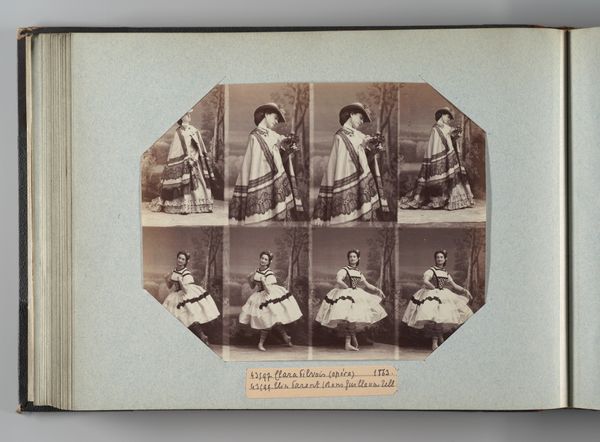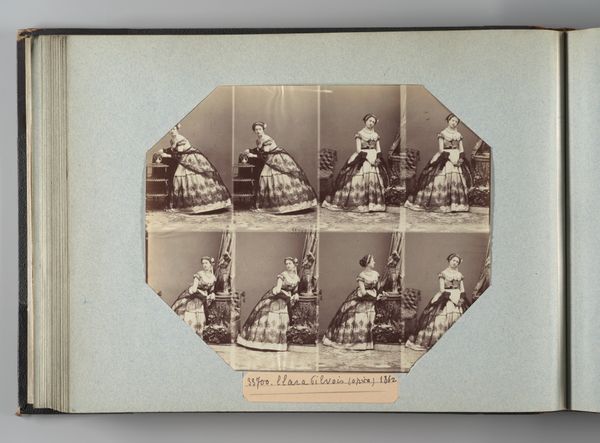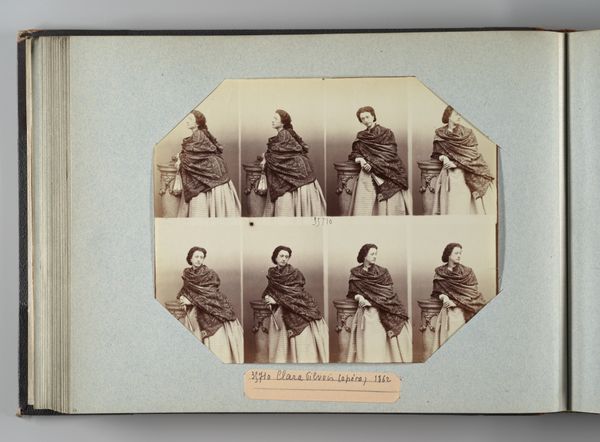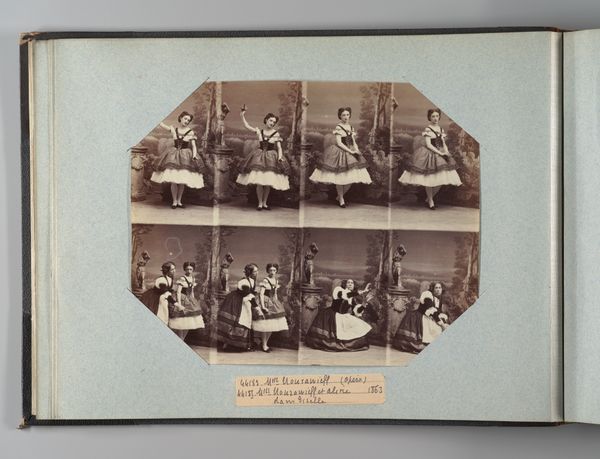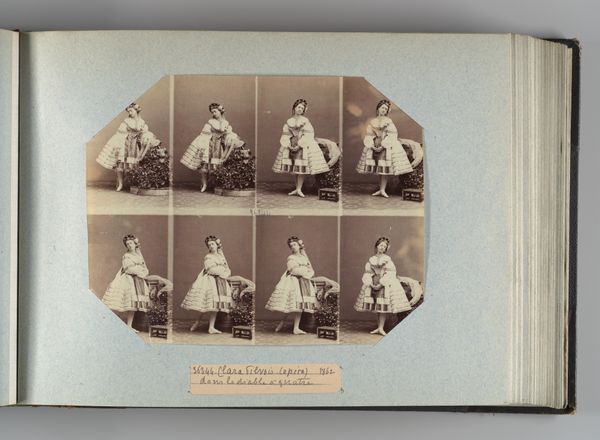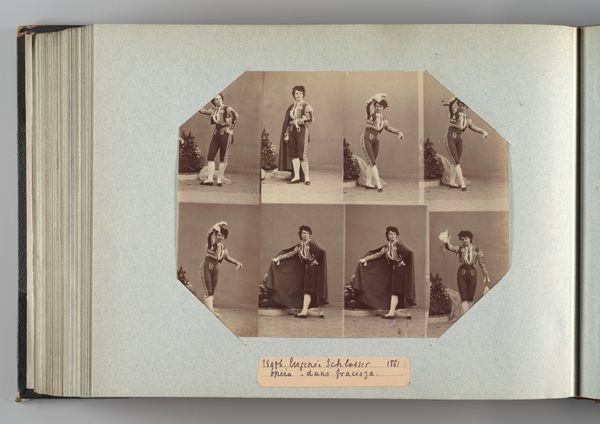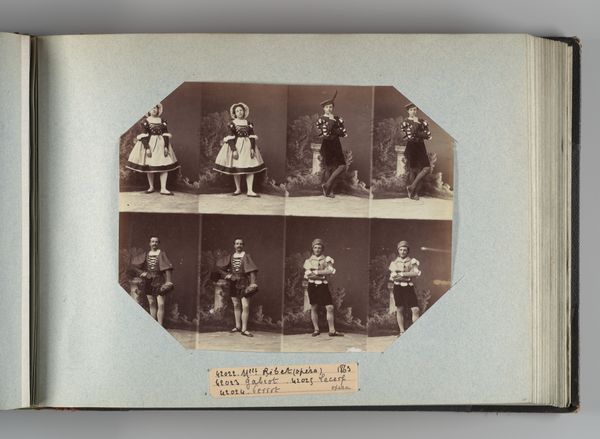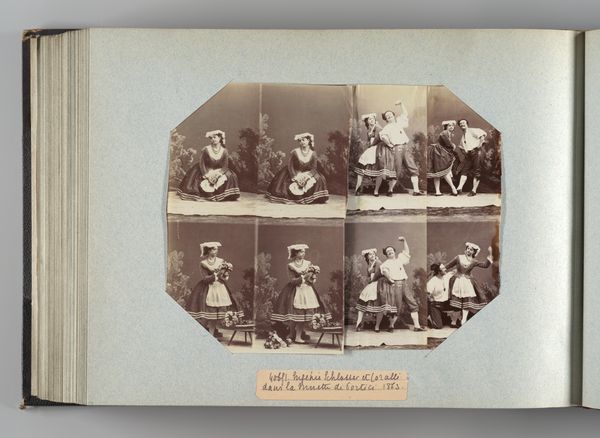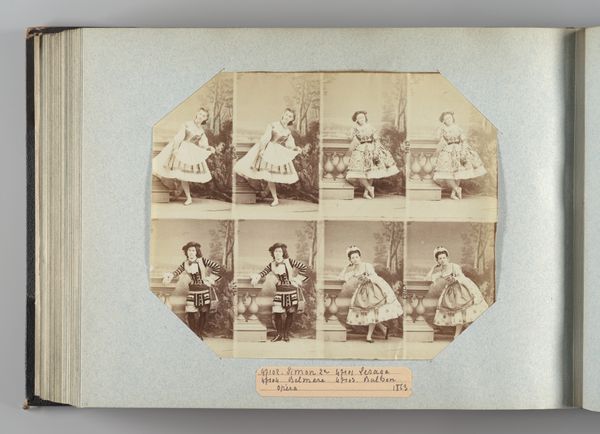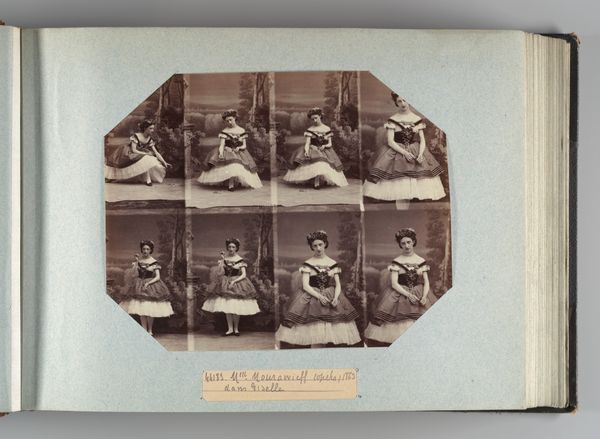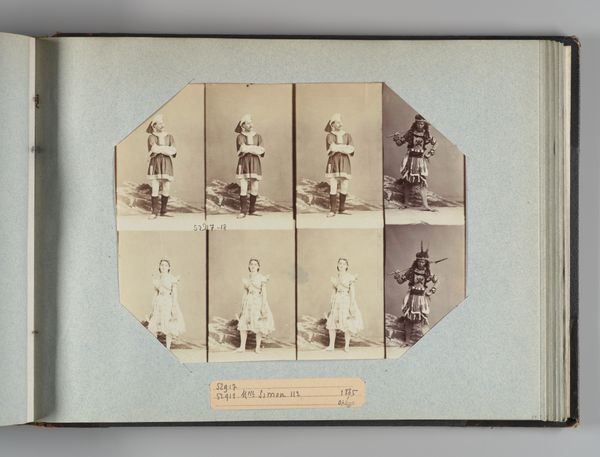![Mechesinski [?] by André-Adolphe-Eugène Disdéri](/_next/image?url=https%3A%2F%2Fd2w8kbdekdi1gv.cloudfront.net%2FeyJidWNrZXQiOiAiYXJ0ZXJhLWltYWdlcy1idWNrZXQiLCAia2V5IjogImFydHdvcmtzLzE1YzdkYzE2LTE3NTItNDQ3MC1hMWM1LTI0M2I2YjNlMWJmOS8xNWM3ZGMxNi0xNzUyLTQ0NzAtYTFjNS0yNDNiNmIzZTFiZjlfZnVsbC5qcGciLCAiZWRpdHMiOiB7InJlc2l6ZSI6IHsid2lkdGgiOiAxOTIwLCAiaGVpZ2h0IjogMTkyMCwgImZpdCI6ICJpbnNpZGUifX19&w=3840&q=75)
print, photography, albumen-print
#
portrait
# print
#
photography
#
albumen-print
Dimensions: Image: 7 3/8 × 9 1/4 in. (18.8 × 23.5 cm) Album page: 10 3/8 × 13 3/4 in. (26.3 × 35 cm)
Copyright: Public Domain
Curator: This rather intriguing photographic print is attributed to André-Adolphe-Eugène Disdéri, dating from the 1850s or 1860s. It's an albumen print and the title given is “Mechesinski [?]”. It appears to be multiple poses on a single sheet. What are your first thoughts? Editor: Well, the first thing that strikes me is its theatrical quality. There's a deliberate constructedness here—it's as if we are watching scenes from a play. I wonder what performative aspects are at work. Curator: Absolutely. The use of photography at this time was rapidly evolving. Disdéri, for instance, was a pioneer of the carte-de-visite format which made portraits more accessible and therefore dramatically impacted how people conceived of identity, fame, and representation. Editor: It really feels like more than a simple portrait, doesn't it? I find myself wondering about the sitter’s self-representation. Given the historical context and Disdéri’s involvement in democratizing image production, the subject is intentionally putting forward a particular version of himself for public consumption, carefully considering all social contexts surrounding him at the time. Curator: That's a key point. It reflects a broader shift in 19th-century visual culture, with people wanting to project a certain image of themselves into society, in some sense democratizing portraiture's role in how social class or power dynamics might be communicated. The repetition and variations on poses give it a feeling of self-consciousness—as if we are given a chance to see a subject’s diverse behaviors. Editor: Considering the political and cultural ferment of that period, the various representations must carry different connotations depending on the social groups and political movements to which our Mechesinski subscribes or tries to appeal to, giving shape to fluid personal narratives with multiple intersecting interpretations. Curator: Indeed. Looking at the Met’s acquisition of this print itself also highlights how even today institutional forces decide what stories get amplified through inclusion in the museum's collection, as these things have social and cultural reverberations on communities’ shared identity and experience of art. Editor: Precisely. The careful staging really makes it hard to decide the best reading to take of the overall piece. There is too much artifice on display.
Comments
No comments
Be the first to comment and join the conversation on the ultimate creative platform.

